Video Extra Credit Assignment
To get you through the rough weather, here is an extra credit assignment! It will be due Tuesday February 19th. It is worth up to 20 formative points. This is for all three video classes.
Watch one of the movies listed below (all are available on Netflix) and answer the question associated with it. Write at least two paragraphs. Your ability to cite specific details will affect your score.
The Third Man (1949), Not Rated – Pulp novelist 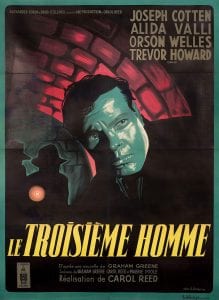 Holly Martins travels to shadowy, postwar Vienna, only to find himself investigating the mysterious death of an old friend, Harry Lime.
Holly Martins travels to shadowy, postwar Vienna, only to find himself investigating the mysterious death of an old friend, Harry Lime.
The introduction of Orson Welles’ character is often called the greatest character introduction ever. What techniques does the movie use before he appears and when he appears to make this so?
Schindler’s List (1993), R – In German-occupied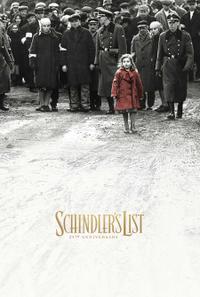 Poland during World War II, Oskar Schindler gradually becomes concerned for his Jewish workforce after witnessing their persecution by the Nazi Germans.
Poland during World War II, Oskar Schindler gradually becomes concerned for his Jewish workforce after witnessing their persecution by the Nazi Germans.
Critics praise Steven Spielberg and Janusz Kaminski’s use of color. How do their color choices underline the story, themes, and questions of the film?
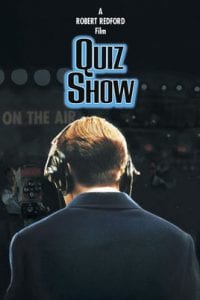 Quiz Show (1994), PG-13 – A young lawyer, Richard Goodwin, investigates a potentially fixed game show. Charles Van Doren, a big time show winner, is under Goodwin’s investigation.
Quiz Show (1994), PG-13 – A young lawyer, Richard Goodwin, investigates a potentially fixed game show. Charles Van Doren, a big time show winner, is under Goodwin’s investigation.
This is the film that put television on trial. How does the film try to emulate techniques of television (acting, cinematography, editing, music, set design)?
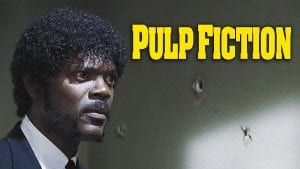 Pulp Fiction (1994), R – The lives of two mob hitmen, a boxer, a gangster’s wife, and a pair of diner bandits intertwine in four tales of violence and redemption.
Pulp Fiction (1994), R – The lives of two mob hitmen, a boxer, a gangster’s wife, and a pair of diner bandits intertwine in four tales of violence and redemption.
Pulp Fiction uses a MacGuffin, an object that has no meaning beyond being a plot point. Why did the filmmakers choose to never actually say what the MacGuffin is? How does this affect the movie?
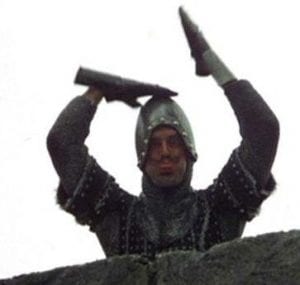 Monty Python and the Holy Grail (1975), PG – King Arthur and his Knights of the Round Table embark on a surreal, low-budget search for the Holy Grail, encountering many, very silly obstacles.
Monty Python and the Holy Grail (1975), PG – King Arthur and his Knights of the Round Table embark on a surreal, low-budget search for the Holy Grail, encountering many, very silly obstacles.
Great satire isn’t just references. It is critical of its source material. What does this film say about the Arthurian legend? How else does it criticize movies, stories and legends?
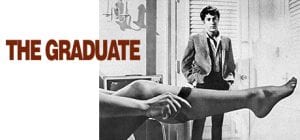 The Graduate (1967) – A disillusioned college graduate finds himself torn between his older lover and her daughter.
The Graduate (1967) – A disillusioned college graduate finds himself torn between his older lover and her daughter.
The Graduate made superstars of musicians Simon and Garfunkel. How does the movie’s use of music affect its mood, tone, and story? How does the music affect its place in history?
 Ghostbusters (1984), PG – Three former parapsychology professors set up shop as a unique ghost removal service.
Ghostbusters (1984), PG – Three former parapsychology professors set up shop as a unique ghost removal service.
Dan Akroyd (star and co-writer) is obsessive about the paranormal. How does the movie walk the fine line between seriously exploring supernatural events and mocking those who believe in them at the same time?
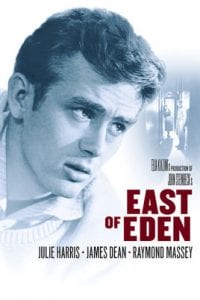 East of Eden (1955), PG – A willful young man contends against his brother for the attention of their religious father while reconnecting with his estranged mother and falling for his brother’s girlfriend.
East of Eden (1955), PG – A willful young man contends against his brother for the attention of their religious father while reconnecting with his estranged mother and falling for his brother’s girlfriend.
James Dean represented a departure from the strong silent types that starred in movies before. What types of choices in acting mark him as different?
Clerks (1994), R – A day in the lives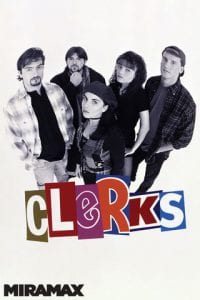 of two convenience clerks named Dante and Randal as they annoy customers, discuss movies, and play hockey on the store roof.
of two convenience clerks named Dante and Randal as they annoy customers, discuss movies, and play hockey on the store roof.
How does the low budget aesthetic (artistic style) of Clerks work with its story and characters?
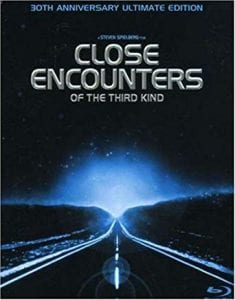 Close Encounters of the Third Kind (1977), PG – Roy Neary, an electric lineman, watches how his quiet and ordinary daily life turns upside down after a close encounter with a UFO.
Close Encounters of the Third Kind (1977), PG – Roy Neary, an electric lineman, watches how his quiet and ordinary daily life turns upside down after a close encounter with a UFO.
Close Encounters is very concerned with different languages. What languages and forms of communication are depicted? How do the themes and story relate to language?
Posted in Blogs, Movie and Video, Movie Making, Studio, Video Production and tagged acting, aesthetic, character, cinematography, Clerks, Close Encounters, Close Encounters of the Third Kind, Dan Akroyd, direction, East of Eden, editing, Extra Credit, film critique, Ghostbusters, introduction, James Dean, Janusz Kaminski, MacGuffin, Monty Python and the Holy Grail, music, Orson Welles, satire, Schindler's List, screenwriting, Shot Selection, Simon and Garfunkel, Steven Spielberg, television, The Graduate, The Third Man by Adam Rauscher with no comments yet.
Advanced Video: Archetype Introductions
In our exploration of character, we 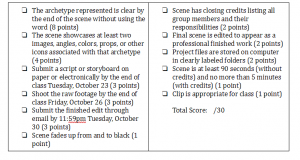 focused on the archetypes proposed by Carl Jung. These are the character types that everyone in our society knows and has a gut reaction to. You can read about them here: Video_ Jungian Archetypes
focused on the archetypes proposed by Carl Jung. These are the character types that everyone in our society knows and has a gut reaction to. You can read about them here: Video_ Jungian Archetypes
We also discussed character introductions and how certain images and iconography helps announce these archetypes.
Your assignment (Rubric: Video Rubric_ Archetype Entrance) is to create a video that introduces one of these archetypes. You should use the iconography to make it clear what your archetype is.
Past projects were not completed on schedule. Therefore, meeting schedules is an important part of this assignment. Each phase has a specific deadline. Each school day you are late on each deadline would lose one point. These deadlines account for about 1/3 of the grade.
The groups were assigned and can be seen below.
Trickster: Jacob, Yara, Samer, Tristan
Explorer: Joze, MeiLing, Nader, Ali
Magician: Andre, Adonis, Will
Everyman: Matt, Joseph, Alex, Eman
Posted in Blogs, Movie and Video, Video Production and tagged archetypes, character, group project, introduction, Jung, project by Adam Rauscher with no comments yet.
Welcome!
 Welcome!
Welcome!
I’m Mr. Rauscher. I’m new to Dearborn High School this year. I am teaching US Economics and all the video production classes because those subjects go together very naturally.
Please note that I’ve created a separate page for my two different subject areas. MY blog for each subject area should display on that page. The blog is useful for updating parents and students about what we are studying and what work is due each week.
Please also sign up for email updates about the blog on the right.

I am not originally from the Midwest. I grew up in New York. When I was your age, I actually took a boat to school. That’s a picture of the boat on the left. It’s called the Staten Island Ferry and it carries 65,000 people every day across New York Harbor. The Ferry gives you amazing views of the Statue of Liberty and the skyline of downtown Manhattan.
 For college, I went to the University of Southern California in Los Angeles. I was there at the same time as Troy Polamalu and Carson Palmer. My degree was in Screenwriting. Several of my classmates have gone on to make exciting projects in film and television.
For college, I went to the University of Southern California in Los Angeles. I was there at the same time as Troy Polamalu and Carson Palmer. My degree was in Screenwriting. Several of my classmates have gone on to make exciting projects in film and television.
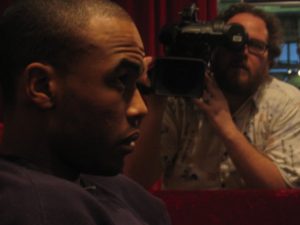 After college, I spent more than ten years working in entertainment. Most of my work was in television, but I also worked in movies and video games. I worked on The Apprentice, America’s Got Talent, Kitchen Nightmares, and many projects for MTV, Showtime, and ESPN.
After college, I spent more than ten years working in entertainment. Most of my work was in television, but I also worked in movies and video games. I worked on The Apprentice, America’s Got Talent, Kitchen Nightmares, and many projects for MTV, Showtime, and ESPN.
 I recently had twin babies. Their names are Theodore and Eleanor. If you ever wonder why I don’t respond to emails late at night, these two kids are probably the reason why.
I recently had twin babies. Their names are Theodore and Eleanor. If you ever wonder why I don’t respond to emails late at night, these two kids are probably the reason why.
 I’m a passionate and frequent gamer. This includes board games, card games, and video games. Currently, I’m playing a lot Settlers of Catan, Cities Skylines on PC, Fortnite on XBox, and Dead of Winter. If you’re lucky, I’ll work some games into the classwork, especially in economics.
I’m a passionate and frequent gamer. This includes board games, card games, and video games. Currently, I’m playing a lot Settlers of Catan, Cities Skylines on PC, Fortnite on XBox, and Dead of Winter. If you’re lucky, I’ll work some games into the classwork, especially in economics.
Be warned, I have very loud sneezes. They often make my babies cry.
I also have a sweet beard. If you want to be either an economist or a  professional filmmaker, a great beard goes a long way to getting you a job.
professional filmmaker, a great beard goes a long way to getting you a job.
I am terrible with names. It will take me months to learn all of your names. If I get one wrong, please correct me gently and I will apologize.
I’m very excited to work with you this year. I am passionate about both my content areas and the opportunity to share it with you is a lot of fun for me.
If you need to get in touch with me, please email at rauscha@dearbornschools.org.
Posted in Blogs, Economics, Movie and Video and tagged boat, introduction, Settlers of Catan, USC by Adam Rauscher with no comments yet.